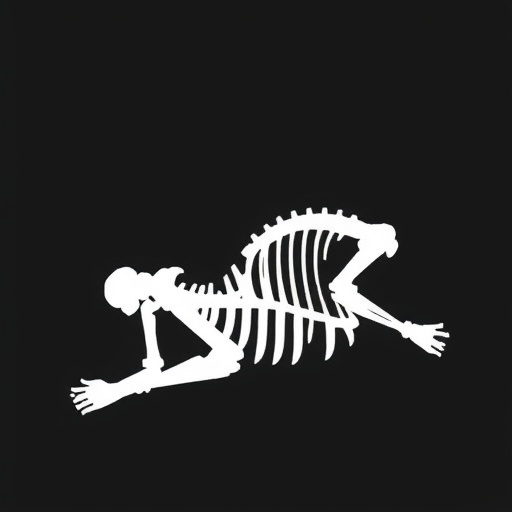In the relentless fight against antibiotic-resistant bacteria, scientists have increasingly turned to copper-based antimicrobials as a potential weapon to curb the escalating threat. Copper, known for its potent antimicrobial properties, has long been employed in agricultural and healthcare settings—from copper sulfate applications in vineyards and orchards dating back centuries to the modern integration of copper surfaces in hospitals aiming to reduce microbial contamination. However, emerging research out of UCLA now reveals a troubling paradox: the heavy use of copper does not merely suppress bacterial populations but may inadvertently drive the evolution of bacterial strains resistant not only to copper itself but also to crucial antibiotic drugs.
This groundbreaking study, recently published in the journal Evolution, Medicine and Public Health, explores the evolutionary consequences of sustained exposure to copper antimicrobials, with a particular focus on Escherichia coli (E. coli), a common bacterium that serves as a model for understanding microbial resistance mechanisms. By exposing multiple E. coli colonies to copper sulfate—a widespread disinfectant and fungicide—the researchers were able to observe the selective pressures copper exerts on bacterial populations. Remarkably, only a subset of the exposed colonies survived repeated copper challenges, and those survivors displayed a marked resistance not only to copper but also to a spectrum of antibiotics, underscoring a chilling convergence in resistance mechanisms.
At the molecular level, the team uncovered that copper-resistant E. coli populations had accumulated hundreds of genetic mutations absent in unexposed control groups. This genetic divergence highlights the plasticity of bacterial genomes under environmental stress, with some mutations localized within genes tied to metal resistance pathways. Interestingly, despite the emergence of antibiotic resistance, no direct mutations were found in genes traditionally associated with antibiotic defense, suggesting that copper resistance might co-opt ancient stress response pathways that incidentally confer cross-resistance to antibiotics. These findings lend strong support to the theory that bacteria utilize overlapping molecular networks to counter multiple threats, a factor with profound implications for antimicrobial stewardship.
.adsslot_OuFIYKAtN3{width:728px !important;height:90px !important;}
@media(max-width:1199px){ .adsslot_OuFIYKAtN3{width:468px !important;height:60px !important;}
}
@media(max-width:767px){ .adsslot_OuFIYKAtN3{width:320px !important;height:50px !important;}
}
ADVERTISEMENT
The implications of copper-driven antibiotic resistance are significant, especially considering copper’s increasing application in both public health and agricultural domains as a strategy to mitigate drug-resistant infections. The pervasive reliance on copper antimicrobials could inadvertently foster an environment where resistant bacterial strains flourish, undermining current efforts to contain antibiotic resistance. This revelation adds a new layer of complexity to the crisis of “superbugs,” emphasizing the need for vigilant management of not just antibiotics but all antimicrobial agents that exert evolutionary pressure on microbial communities.
However, the study also delivers a measure of hope. Intriguingly, when copper exposure was halted, the copper-resistant bacteria exhibited a rapid reversion to lower resistance levels within a mere seven days, demonstrating a remarkable genetic and phenotypic plasticity. Some bacterial populations fell back to baseline susceptibility, while others retained a partial resistance, reflecting heterogeneity in evolutionary trajectories and underlying genetic factors. This reversibility suggests that resistance confers certain fitness costs in the absence of selective pressure and that strategic alternation between copper and other antimicrobials could stymie the development and persistence of resistant strains.
The researchers propose that by cycling the use of copper with other antimicrobial interventions, it may be possible to preserve copper’s effectiveness while preventing the entrenchment of resistance. Such a rotational strategy would mimic principles long advocated in antibiotic stewardship—avoiding constant exposure to a single agent to minimize selective pressure. Implementing this approach across healthcare and agricultural sectors could create a dynamic antimicrobial environment disrupted enough to outpace bacterial adaptation, thereby prolonging the utility of existing antimicrobial compounds.
Fundamental to the study’s conclusions is the evolutionary perspective on resistance mechanisms. The lead scientists highlight that the pathways responsible for resisting copper and antibiotics likely trace back millions of years, rooted in bacterial responses to ancient environmental stressors such as temperature extremes. This evolutionary conservation hints at a universal mechanism across diverse bacterial taxa, underscoring the potential generality of the findings beyond E. coli. Indeed, the underlying biology suggests that copper-induced cross-resistance could be a widespread phenomenon impacting many clinically relevant bacterial species.
Methodologically, the research harnessed long-term experimental evolution techniques, involving iterative selection under copper-enriched conditions and subsequent genetic sequencing to map mutations associated with resistance phenotypes. This rigorous experimental design allows for causal inferences about the effects of copper on bacterial evolutionary dynamics, distinguishing this work from mere observational studies. The genetic insights, combined with phenotypic assays testing susceptibility to multiple antibiotics, offer a robust framework for interpreting how environmental antimicrobials shape resistance landscapes.
The study’s authors caution against complacency in the face of copper’s antimicrobial prowess. While copper remains an invaluable tool in infection control, indiscriminate or excessive use risks mirroring the antibiotic resistance crisis the global health community seeks to avoid. This nuanced understanding calls for balancing the benefits of copper-based antimicrobials with their evolutionary consequences, integrating scientific findings into policy and practice at multiple levels—laboratory research, clinical application, agricultural management, and public health guidelines.
Beyond its direct implications, this research accentuates the interconnectedness of environmental factors and microbial evolution. It challenges traditional paradigms that consider antibiotic resistance solely from the perspective of drug use, implicating metals and other environmental stressors as significant contributors to resistance proliferation. Consequently, comprehensive strategies addressing antibiotic resistance must incorporate a broader environmental lens, one that scrutinizes the multifaceted pressures shaping microbial genomes in real-world settings.
In sum, the UCLA findings emphasize a critical yet overlooked dimension in antimicrobial resistance research: the role of copper and similar agents as evolutionary catalysts of cross-resistance. They call for strategic deployment of copper antimicrobials, informed by evolutionary biology, to harness their benefits while minimizing risks. As bacterial pathogens continue to evolve with alarming rapidity, such insights will be vital in designing resilient public health interventions capable of preserving the efficacy of antimicrobial arsenals for future generations.
Subject of Research: Evolution of copper and antibiotic resistance in Escherichia coli under copper antimicrobial exposure
Article Title: Heavy Use of Copper Microbials Drives Cross-Resistance to Antibiotics in E. coli, Study Finds
News Publication Date: 2024
Web References:
https://academic.oup.com/emph/advance-article/doi/10.1093/emph/eoaf015/8182076
References: Cited study from Evolution, Medicine and Public Health journal
Image Credits: Not provided
Keywords: Bacteriology, Metals, Public Health, Antibiotic Resistance, Copper Antimicrobials, E. coli, Microbial Evolution
Tags: agricultural use of copper sulfateantibiotic resistance mechanismsantimicrobial properties of coppercopper-based antimicrobialsEscherichia coli resistanceevolutionary consequences of copper exposurehealthcare applications of copperimplications for public healthmicrobial contamination reductionparadox of copper in infection controlselective pressures on bacterial populationssustained exposure to antimicrobials





